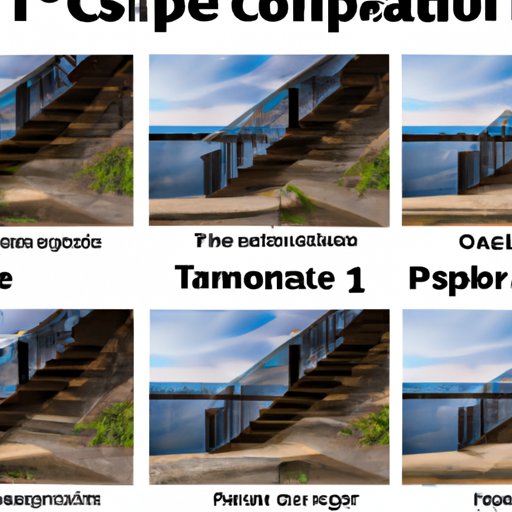Introduction
Composite photography is a creative technique that involves combining multiple images together to create a single, unique photograph. This type of photography has become increasingly popular in recent years, as it allows for a great deal of flexibility when creating visually stunning images. In this article, we’ll take a look at what composite photography is, how it is used and the steps involved in creating a composite photograph.
Steps Involved in Creating a Composite Photograph
Creating a composite photograph involves several steps, including selecting and preparing images, layering and blending images, and making final adjustments. Let’s take a closer look at each step:
Step One: Selecting and Preparing Images
The first step in creating a composite photograph is to select and prepare the images you will be using. This includes choosing the images that you want to use and ensuring that they are of good quality and have been properly edited. Once you have selected your images, you can then begin to prepare them for compositing.
Step Two: Layering and Blending Images
Once you have selected and prepared the images you will be using, the next step is to layer and blend them together. This is done by placing one image on top of another, adjusting their size and orientation, and then blending them together using various techniques. The goal here is to create a seamless composition that looks natural and aesthetically pleasing.
Step Three: Final Adjustments
The final step in creating a composite photograph is to make any necessary final adjustments. This includes making minor tweaks to colors, contrast, and other elements in order to achieve the desired effect. Once these adjustments have been made, the composite photograph is ready to be shared with the world.
Examples of Composite Photography
Composite photography can be used to create a variety of different types of photographs, including landscape, portrait, and still life compositions. Let’s take a look at a few examples of composite photography:
Landscape Composites
Landscape composites are created by combining multiple images of landscapes together to create a single, unified scene. This type of composite often features multiple elements, such as mountains, forests, lakes, and more, all combined into one image. Landscape composites are great for creating stunning visuals that capture the beauty of nature.
Portrait Composites
Portrait composites involve combining multiple images of people together to create a single portrait. This type of composite often features multiple faces or figures in a single frame, giving the impression of a larger group of people. Portrait composites are great for creating unique visuals that capture the essence of a particular moment or emotion.
Still Life Composites
Still life composites involve combining multiple images of objects together to create a single still life composition. This type of composite often features multiple elements, such as plants, animals, furniture, and more, all combined into one image. Still life composites are great for creating interesting visuals that capture the beauty of everyday objects.
Software Used for Compositing
There are several different software programs that can be used for compositing images. The most popular program for this type of work is Adobe Photoshop, which offers a wide range of tools and features for creating composite photographs. Other popular programs include GIMP and Affinity Photo, both of which offer powerful features for compositing images.
Benefits of Composite Photography
Composite photography offers a number of benefits, including the ability to create unique visuals, the flexibility to work with different elements, and the cost-effectiveness of combining multiple images into one. It also allows photographers to experiment with different techniques, such as layering and blending, in order to create truly unique images.
Conclusion
Composite photography is a creative technique that involves combining multiple images together to create a single, unique photograph. It involves several steps, including selecting and preparing images, layering and blending images, and making final adjustments. There are several software programs available for creating composite photographs, such as Photoshop, GIMP, and Affinity Photo. Composite photography offers a number of benefits, including the ability to create unique visuals, the flexibility to work with different elements, and the cost-effectiveness of combining multiple images into one.
(Note: Is this article not meeting your expectations? Do you have knowledge or insights to share? Unlock new opportunities and expand your reach by joining our authors team. Click Registration to join us and share your expertise with our readers.)
